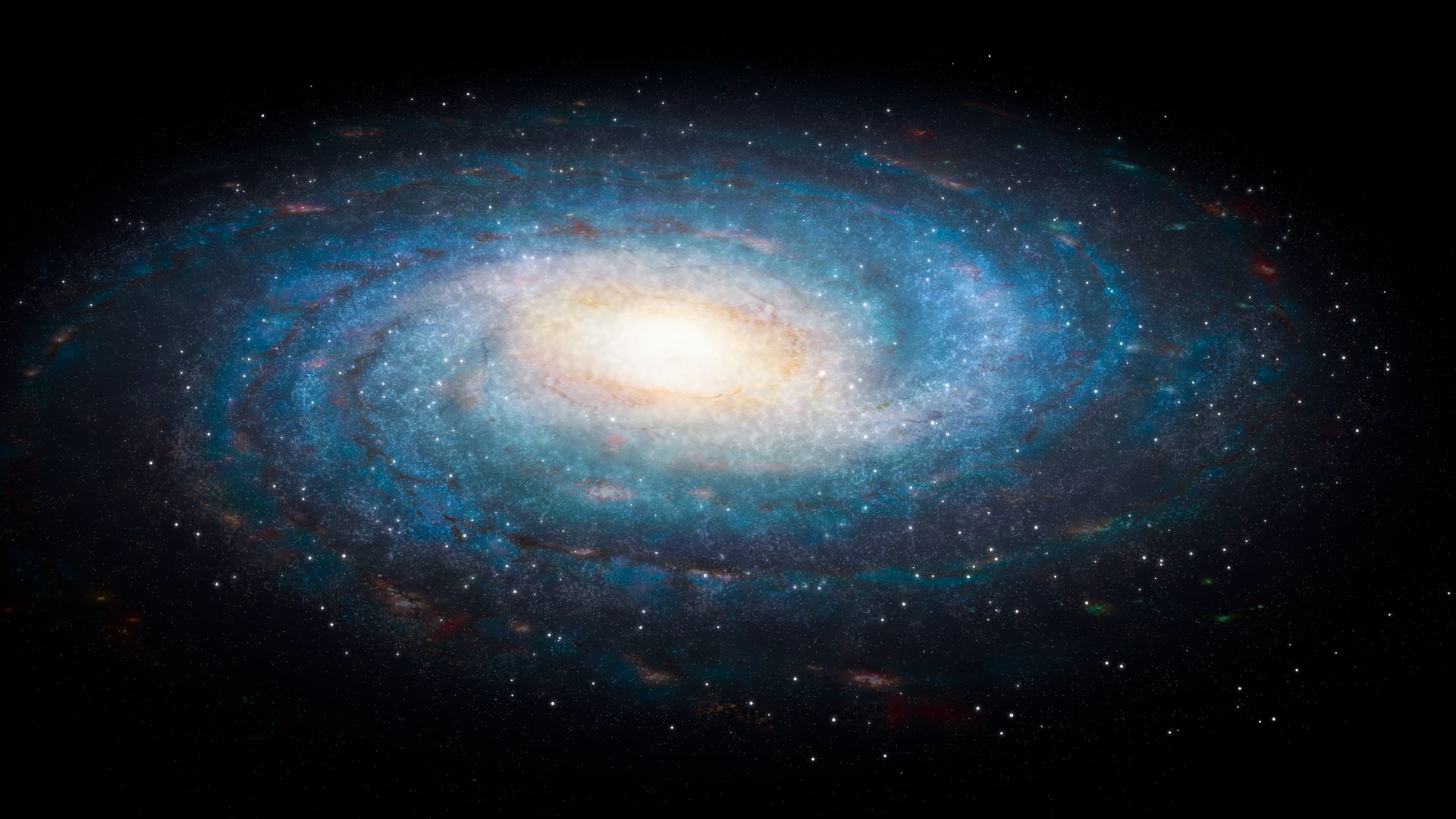'This is a journey, not a destination': Stunning map of the Milky Way's center exposes new mysteries about our galaxy
A stunning new map of the magnetic fields at the Milky Way's center charts never-before-seen features, and raises new questions about how our galaxy's central engine works.

The Milky Way is our home galaxy, but how well do we actually know it? As part of a NASA-funded project, a team led by Villanova University researchers has obtained a never-before-seen view of the central engine at the heart of our galaxy.
The new map of this central region of the Milky Way, which took four years to assemble, reveals the relationship between magnetic fields at the heart of our galaxy and the cold dust structures that dwell there. This dust forms the building blocks of stars, planets, and, ultimately, life as we know it. The central engine of the Milky Way drives this process.
That means a clearer picture of dust and magnetic interactions builds a better understanding of the Milky Way and our place within it. The team's findings also have implications beyond our galaxy, offering glimpses of how dust and magnetic fields interact in the central engines of other galaxies.
Understanding how stars and galaxies form and evolve is a vital part of the origin story of life — but, until now, the interaction of dust and magnetic fields in this process has been somewhat overlooked, especially within our own galaxy.
"The center of the Milky Way and most of the space between stars is filled with a lot of dust, and this is important for our galaxy's life cycle," David Chuss, research team leader and a physics professor at Villanova University, told Space.com. "What we looked at was light emitted from these cool dust grains produced by heavy elements forged in stars and dispersed when those stars die and explode."
A complicated picture of Milky Way magnetic fields
In the heart of the Milky Way exists a region called the central molecular zone, which is packed with an estimated 60 million solar masses of dust. This vast reservoir of dust has a temperature of around minus 432.7 degrees Fahrenheit (minus 258. 2 degrees Celsius). That's just a few degrees above absolute zero (minus 460 Fahrenheit), the hypothetical temperature at which all atomic movement would cease.
Get the world’s most fascinating discoveries delivered straight to your inbox.
Also located at the heart of the Milky Way is hotter gas that has been stripped of its electrons, or "ionized," and exists as a state of matter called "plasma."
"Radio wave observations of this region have these beautiful vertical elements in them that trace magnetic fields in the hot, ionized plasma component of the center of the Milky Way," Chuss said. "We tried to figure out what relationship this has to the cool dust component.
The team also wanted to know how this cool dust aligns with the magnetic fields at the heart of the Milky Way, which would also reveal how these magnetic fields are orientated. Such orientation is referred to as their "polarization."
Chuss and colleagues received funding from NASA to investigate this dusty central zone using the Stratospheric Observatory for Infrared Astronomy (SOFIA), which was a telescope that circled the globe at an altitude of 45,000 feet (13,716 meters) aboard a Boeing 747 plane.
The project's Far-Infrared Polarimetric Large Area CMZ Exploration (FIREPLACE) created an infrared map that spans around 500 light-years across the center of the Milky Way over nine flights.
Using measurements of the polarization of the radiation emitted from dust that is aligned with magnetic fields, the intricate structure of those magnetic fields themselves was inferred by the team. This was then overlaid onto a three-color map that shows warm dust with a pink hue and cool dust clouds in blue. The image also shows radio-wave-emitting filaments in yellow.
"This is a journey, not a destination, but what we've found is this is a very complicated thing. The directions of the magnetic field vary all across the clouds at the center of the Milky Way," Chuss explained. "This is the first step in trying to figure out how the field that we see in the radio waves across these large organized filaments may relate to the rest of the dynamics of the center of the Milky Way."
Chuss explained that this complicated picture of magnetic fields was something that he and the FIREPLACE team had expected to see with the new SOFIA map; the observations agreed with smaller-scale infrared and radio wave observations previously made of the heart of the Milky Way. Where this new map, however, really comes into its own is the sheer scale. It manages to reveal some never-before mapped regions. The fine detail woven into it is stunning as well.
"I think we have a lot of work to do to ultimately come up with the conclusions here. One of the things that I think is interesting about it is some of the fields appear to be in the same direction as the filaments in the radio waves, and some of them appear to be consistent with the direction of the dust further out in the disk," Chuss said. "It's a tantalizing hint that maybe the large-scale field in the disk of our galaxy and the vertical field that we've noticed in the center of the Milky Way are connected."
He and the team will continue to analyze the SOFIA data over the course of the next two years, and he hopes that this work will inspire theorists to come up with some new models to explain what is happening at the heart of our galaxy.
A preprint version of the SOFIA data is published on the paper repository arXiv.
Originally posted on Space.com.
Robert Lea is a science journalist in the U.K. who specializes in science, space, physics, astronomy, astrophysics, cosmology, quantum mechanics and technology. Rob's articles have been published in Physics World, New Scientist, Astronomy Magazine, All About Space and ZME Science. He also writes about science communication for Elsevier and the European Journal of Physics. Rob holds a bachelor of science degree in physics and astronomy from the U.K.’s Open University






